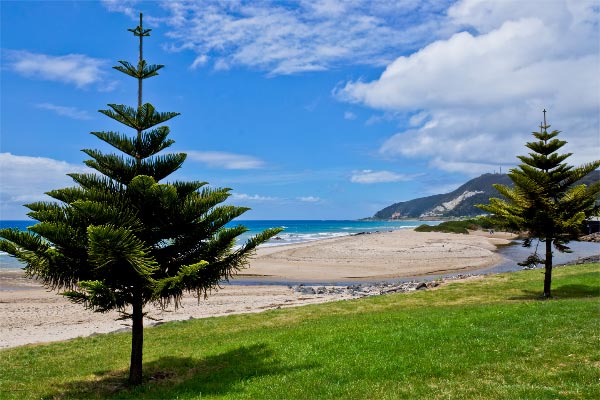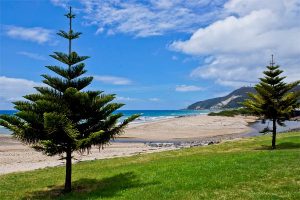The International Woodworking Fair (IWF) at the Georgia World Congress Center completed four days of tremendous activity on Friday, dominated by 925 exhibits. Machinery on tap was mostly downstream, remanufacturing and secondary processing, with some primary manufacturing technologies and laminate…
Code Officials Vote To Advance Mass Timber Proposals
The International Code Council’s (ICC) Committee Action Hearings in Columbus, Ohio, have concluded with a clear endorsement of building codes that will enable the use of mass timber technologies in buildings ranging up to 18 stories. Though taller mass timber buildings are currently being built under various local codes, this move by the ICC ensures that model code provisions will be available to many more building officials.
Mass timber structures are generally built with large panels made of cross-laminated timber (CLT), nail-laminated timber (NLT), glue-laminated timber (Glulam) or structural composite lumber (SCL). The greater availability of CLT has provided new options for builders.
“The strength and fire resistance performance of mass timber structures is well understood and supported by substantial testing and data,” said Stephen DiGiovanni, P.E., Chair of the ICC’s Ad Hoc Committee on Tall Wood Buildings and fire protection engineer for the Clark County (NV) Department of Building and Fire Prevention. “As taller mass timber buildings become more widely deployed, it’s important that the International Building Code and the entire family of I-Codes remains at the forefront of emerging construction technologies, and continues to provide building and fire code officials with the tools they need to ensure the safety of the public and first responders.”
All buildings under the International Building Code (IBC) must meet specified fire performance standards, whether built of steel, concrete or mass timber. The 14 code provisions passed out of the ICC Committee Action Hearing established new fire resistance standards and procedures for mass timber that are more rigorous than comparable steel and concrete structures.
From Civil+Structural Engineer: https://csengineermag.com/code-officials-move-update-ibc-tall-mass-timber-buildings/


 Forest Industries Assn. of Tasmania (FIAT) and Australian Forest Products Assn. (AFPA) announced that Hermal Group is building a $190 million hardwood sawmill and hardwood cross-laminated timber complex in Burnie in northwest Tasmania, Australia. It will be called Tasmanian Amalgamated Renewable Timbers.
Forest Industries Assn. of Tasmania (FIAT) and Australian Forest Products Assn. (AFPA) announced that Hermal Group is building a $190 million hardwood sawmill and hardwood cross-laminated timber complex in Burnie in northwest Tasmania, Australia. It will be called Tasmanian Amalgamated Renewable Timbers.